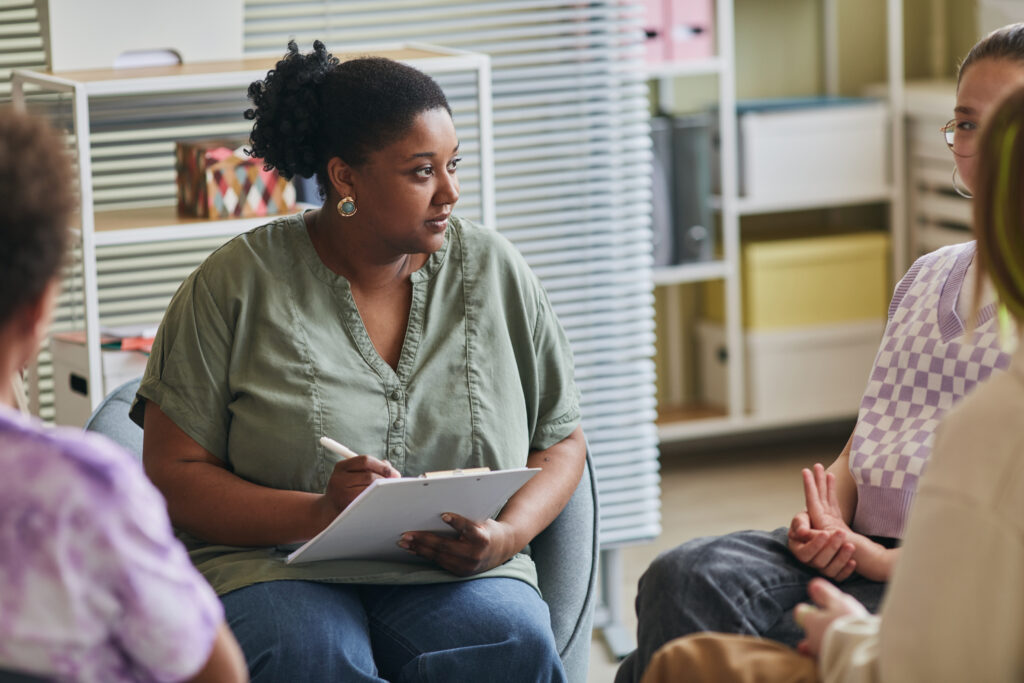Sometimes population health feels like two trains on a collision course, with rising health disparities hurtling toward a healthcare system that’s bursting at the seams. When it comes to rural and Tribal communities, you can add in a few other factors: long wait times (and often long travel distances) for appointments, provider shortages and sometimes, a heavy dose of distrust.
Visit an underserved community and you’ll find some legitimate reasons for that distrust, which has a way of turning into low healthcare engagement. Some members have experienced clinical racism, witnessed poor treatment of a family member, or heard stories of medical exploitation. Some fear surprise billing or lack health insurance, or grew up in a community skeptical of the healthcare establishment.
That’s where “third places” come into the solution. By bringing clinical services and education to businesses already trusted by the community, third places can increase patient engagement and embed clinical care into the patient’s everyday life.

Taking Healthcare to the Community
Coined by sociologist Ray Oldenburg, the term “third places” refers to any community hub where people spend time and build relationships. (If you were wondering, the first and second places are home and work/school.) Third places include:
- Libraries
- Churches, temples, and mosques
- Salons and barbershops
- Senior centers
- Athletic leagues and gyms
- Community organizations
- Professional associations
These spaces offer effective healthcare channels for several reasons. They’re accessible and part of daily routines. Often they offer neutral ground; social hierarchies tend to dissolve in a gym or coffee shop. But most importantly, they foster a high level of trust. Someone may look up to their coach or minister, confide in their hair stylist, feel safe in a library. People speak the same language, share cultural references.
In other words, third spaces reach patients where they are. Even if they won’t seek out a primary care provider or flu vaccine clinic on their own, these patients will encounter opportunities for preventive healthcare and provider relationships in their daily routines.
Here’s what it looks like when we take healthcare out of a clinical facility.

Third Places in Action
Agnostic healthcare services and religious institutions might seem an odd pairing at first – but some hospitals have found great success in reaching patients at places of worship. During the COVID-19 pandemic, the Johns Hopkins Hospital in Baltimore held “congregational conversations” over Zoom with mosques and churches to reduce infection rates; the hospital also worked with them on identifying people with mental health issues and connecting them to clinical services. A report by American Muslim Health Professionals (AMHP) found free mosque-based health clinics to be highly effective in underserved communities. The clinics provide vaccines, education on managing chronic conditions, and other services, with an estimated value as high as $21 million each year.
Libraries are another community locus. From children’s story hour to public Internet access to English as a new language classes, today’s library educates its community. Because addicts and the homeless often flock to libraries, some libraries have trained their staff to administer Narcan, an opioid overdose treatment. Others have added social workers to address patrons with mental illness or struggles with social determinants of health.
Then there’s the rising relationship between fitness centers and medical providers. From telemedicine visits at the gym to workshops on nutrition, pain management, and preventing chronic disease, fitness centers are making it easy for their customers to fit healthcare into their daily workout.
One highly successful program is HAIR – Health Advocates In-Reach and Research (HAIR) program, operated by the University of Maryland (UMD) Center for Health Equity. After finding that African American men are less likely than other men to visit a doctor, the team began working with barbershops, hospitals, and specialty practices to address community health issues. Barbers were trained to talk to their customers about colon cancer screenings, hypertension, counseling, and other areas, while specialists would offer workshops on medication and treatment to overcome community cynicism.

3 Steps to Activate Third Spaces
Done well, third spaces reframe the patient experience. By bringing clinical resources to popular community spaces, your healthcare system can connect more underserved patients to care and build a web of connections that deepen long-term engagement.
If you’re interested in launching a program in your community, start with these three steps.
1. Assess community needs. Based on community data, identify the most pressing public health issues and their drivers. One underserved community may have high diabetes and hypertension rates. Another may be afflicted by food insecurity or high maternal mortality rates or have a number of elderly residents who lack adequate care.
2. Identify organizations to partner with. Look for the businesses, clubs, and organizations trusted by the right demographic of patients. If your goal is to increase depression screenings and treatment for the elderly, look for a senior center that already offers programs like chair yoga or Silver Sneakers walking groups. A summer park program or library could host workshops on hypertension or diabetes management. Churches, gyms, and social services offices can schedule mobile health units that perform mammograms or cardiac screenings.
3. Collaborate and measure. Third space programs are most effective when local leaders can share their observations and help shape the outreach. They will likely have a different perspective and some of their views may challenge your own, but that can be valuable; they understand how their patrons function in a non-clinical environment. Once you’ve devised a plan and launched the programs, measure the upticks in patient outcomes within your healthcare system – and modify accordingly.
From Patient Trust to Transformation
If there’s one thing COVID-19 taught us, it’s that healthcare is a collaborative effort. Health literacy and engagement are born out of the information patients learn from each other, their everyday habits, and the clinical opportunities in their environment. Third places offer hospitals a way to work meaningfully with their communities and offer a cohesive and ongoing patient journey rather than disconnected touchpoints. Overcoming patient distrust isn’t easy in underserved communities for good reason – but third places offer patients a bigger and brighter reason to transition from cynicism to an active role in their own health.

